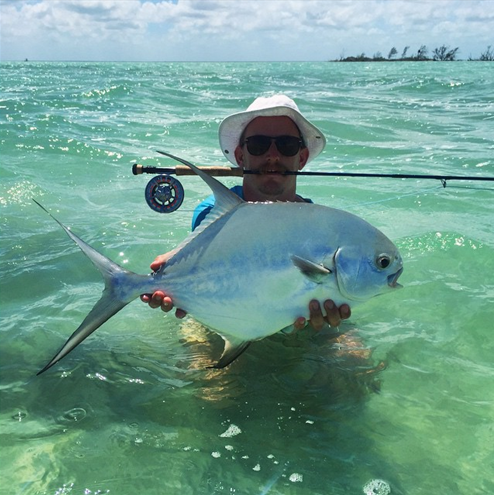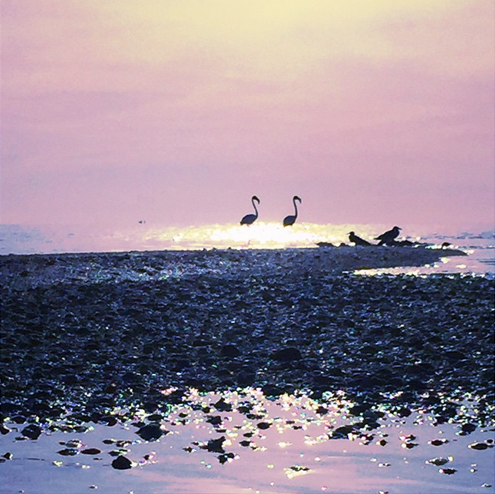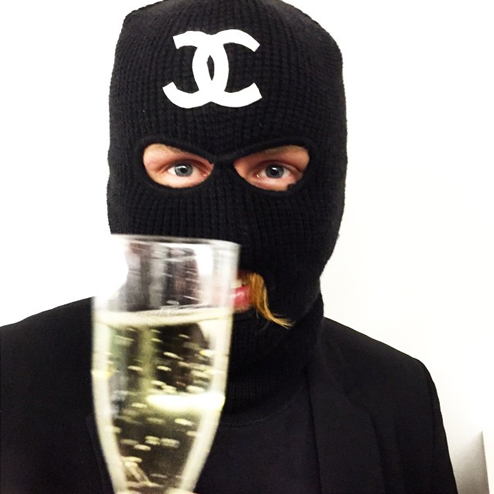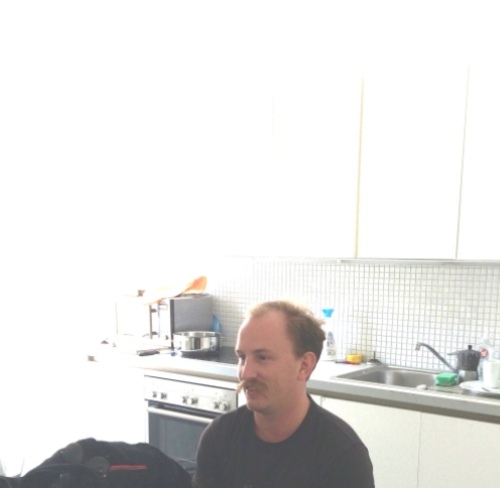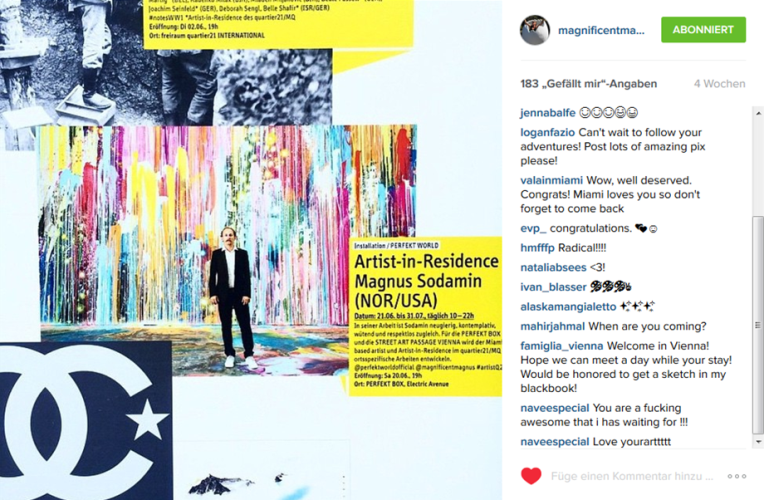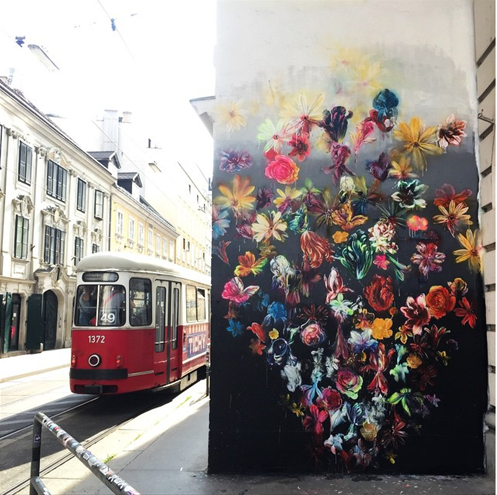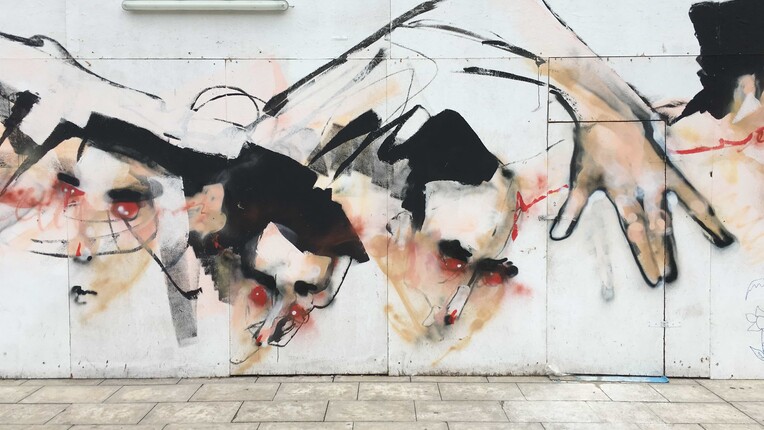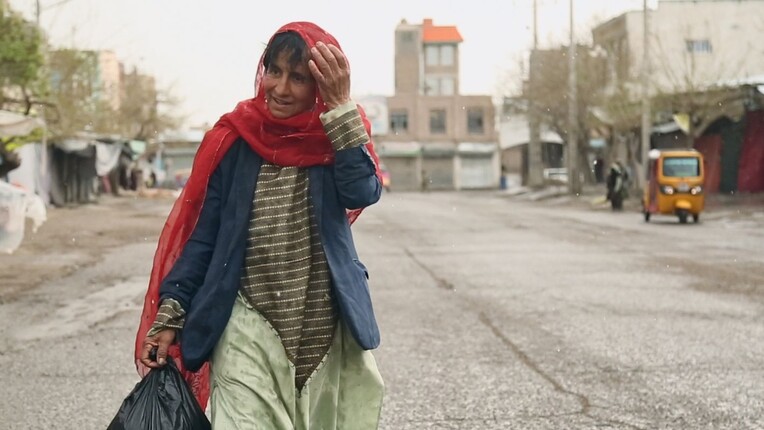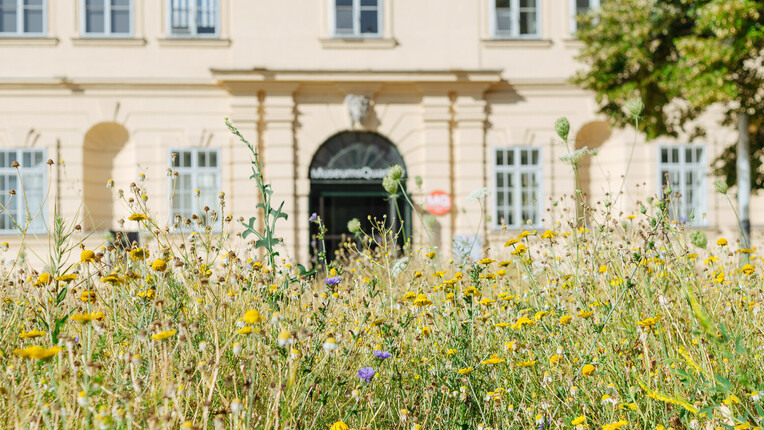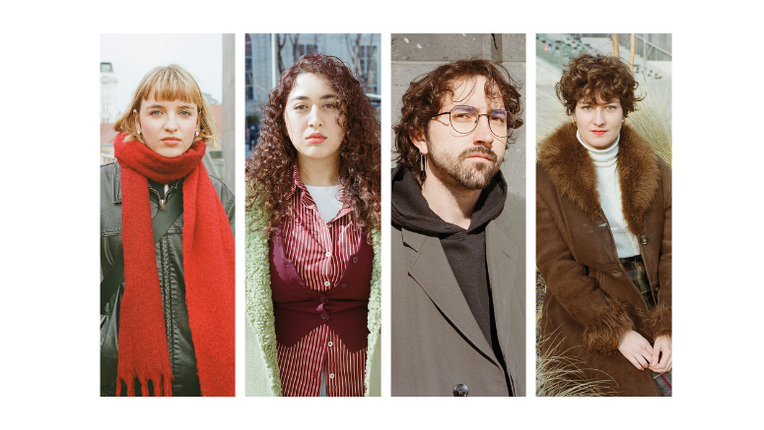
„Call me a building artist“
Conversation with Artist-in-Residence Magnus Sodamin
Magnus Sodamin’s work is multidisciplinary and ranges from painting, sculpture and drawing to performance and installation. The artist was born in New York City but has lived in Miami for the past 16 years. In Florida he feels strongly connected to nature on the one hand and big city vibes on the other. These forces somehow seem to soak his large-scale canvases, murals and space-filling installations which are dripping with colorful energy. Sodamin is fascinated by the interplay of surface and depth and in this conversation we try to find out on which levels he operates with it. Therefore, we do not talk about fishing on glassy water surfaces without asking the man who has 4k followers on Instagram about the relationship between the will to self-display and the need to vanish.
How is life in Miami?
For me, in Florida there’s a good balance between nature, where you’re isolated, and the city, which is such a fast-paced place. I’m lucky to have found some kind of release, whether it is fishing or camping, canoeing or just kind of exploring, seeing beautiful places, and at the same time there’s a growing art community, which is really supportive. It’s a growing city, a fast-moving city, but it’s also a place where you can find two kinds of experience. I usually choose to drive down Calle Ocho, which is like the Cuban US1. It’s a very touristy and crowded neighborhood. I have a lot of Cuban friends, we go fishing together and it’s nice to have that perspective.
You do have a thing for fish, right?
I do. I’ve been fishing ever since I was a little kid. My dad and my grandfather in Norway taught me how to fish. I was used to fishing for salmon in rivers but when I came to Miami I went into fly fishing. I tie my own flies, I go out on the canoe at six in the morning when the sun is coming up. And it’s all about “Oh! What is going to happen today, what’s gonna be beautiful today, how is the sunrise going to look?” Every day is different. You’re always waiting for the moment when there’s no wind and you can see the perfect reflection of the sky, dolphins swimming, it’s like a dream. Sometimes it’s a dream. It still amazes me every day.
Fishing is something you do without company?
I put a 10-gallon-jug of water in the front of my canoe, it has the weight of somebody else. Fishing gives me inspiration. I think it’s just something I need, it’s hard to describe.
You have never painted fish though.
I have! I have a friend who runs a salmon company and he commissioned me to paint a lot of salmons. Usually when people commission you they ask for weird things but I always take on the challenge and I try to do my best. Sometimes it ends up being really gratifying, because you wouldn’t paint some salmons if nobody asked you to.
When I say the words “art” or “art market”, do you have butterflies in your stomach or do you have a rather queasy feeling?
A little bit of both. The queasy feeling comes afterwards, when I think about how much I invested and how little I get in return, when I think about financial aspects, but I think this is something you get better at. The art market at large is KIND of crazy. It takes years to get involved. I just keep on doing the thing that I love so I don’t put that much consideration into it day to day. But when you think about all the money that comes to Miami for Art Basel every year, it’s kind of numbing. All of a sudden there are so many people in the city, so many events going on – a tornado of things going on – and to be honest, it’s always too much.
Is anti-art an option, a way we can fight such a system?
What is anti-art?
That’s the question.
When I think of anti-art I think of commercialization, advertising and bad graphic design. I mean graphic design can be art, too, but most of it isn’t. For me there’s just too much of that. It’s really hard to define what art is and once you try to do that you always get into trouble, but I think people can make their own choices. You don’t always have to talk about it. I think lifestyle is also art, in the way that everything you do in your life is a reflection of you.
For your installation “Hide and Seek” at the showroom of PERFEKT WORLD you mantled mannequins in a way that they visually melt into their surroundings. What remains is an idea of bodies. Are you talking about a “Me” that is absorbing the environment, or let’s put it this way: Am I what surrounds me?
It goes back and forth. We are spiritual animals and we adapt to our environments, but we change them as well. When it comes to nature, a lot of animals have always used camouflage to disguise themselves and to adapt to predation. That is kind of our primordial past. Now we don’t need to do that anymore but we still do it with clothing, fashion, things that surround us like our second skins, even homes. We protect ourselves and we try to show that we are part of something.
And we do present ourselves to a broader public via social media on a daily basis. What does mantling and disguising mean in an era of self-display?
It’s almost like we have to. We have to, because it’s a way to connect with people around the world. So for me it’s a very positive thing, but it also takes away a lot of privacy, of course. However, it’s a choice.
Is it?
I mean, yeah, people become addicted to it, you always have to be present, you always have to gain attention, or you always do what you’re expected to do. We always want to…
Is this an #instamoment?
Haha. I think people live their lives through other people’s lives on Facebook etc and I think people want people to do that.
In your short description on Instagram you wrote, “I am you and what I see is me.” Are we trapped in self-references?
That’s from the song Echoes by Pink Floyd. In our brains we have these neurons called mirror-neurons. It’s basically a neuron in your brain that connects with another person’s neuron. It tells you exactly what the other person is thinking, kind of telepathically. I think in that way we're always going to be connected.
However, I can only understand other minds through my own. That’s the problem of other minds.
Yes, but some people are more sensitive than others – so there are different layers of that.
Your’re not a street artist, but you mentioned being surrounded by them a lot. Where does street art stand today? For years they spoke of the risks of being absorbed by the market when you – as a street artist - flirt with galleries and exhibition halls or even museums.
There’s such a fine line between street art, graffiti and fine arts, I think the way to define yourself is to do your thing a little bit differently than others. People want to get their name out and they think they can achieve that by doing as much as they can on the street, which is not really the case. It’s about what you do. People who write their names on every corner – why do that? I think that’s an addiction.
I assume you have never written your name on a wall.
I have never done that, but I’ve always been surrounded by friends who have. It’s an addiction for sure. And it’s self-display as well. It’s like Instagram, you want to show yourself constantly.
Is there still some kind of (artistic) spirit of riot on the streets?
I guess so. I guess it’s always been like that. And it always will be there. Graffiti will never end. Street Art will never end. It always happens.
How did you become a muralist?
Well, my paintings are huge, I paint 20-foot paintings, they are really hard to sell. I’m fascinated by working with scale, I live in it more and I just don’t feel involved with a 1-foot painting. For me it was a very natural step from canvas to wall, it was almost like there was no difference. When people walk by, they feel like they’re inside the painting. I recently completed a large-scale mural at Jose de Diego Middle School to raise money for the art program, so that students there could hire an art teacher. And when I painted that school I saw children taking little pieces of cracked paint off the wall and they put it in their pockets as if they were taking a piece of art. I saw that a couple of times and I found that really cool.
You do public art, but you refuse the term street artist?
You can call me a building artist.
You’re avoiding the attribution to street art.
My paint sometimes spills on the streets, that is true.
Magnus Sodamin was Artist-in-Residence at Q21/MuseumsQuartier Wien in June 2015. He was recommended by the Q21-partner PERFEKT WORLD and presented his work at their showcase PERFEKT BOX at Q21/MQ.
Follow Magnus Sodamin on Instagram @magnificentmagnus
Watch our Artist-in-Residence Video here #artistQ21
Interview: Margit Mössmer
